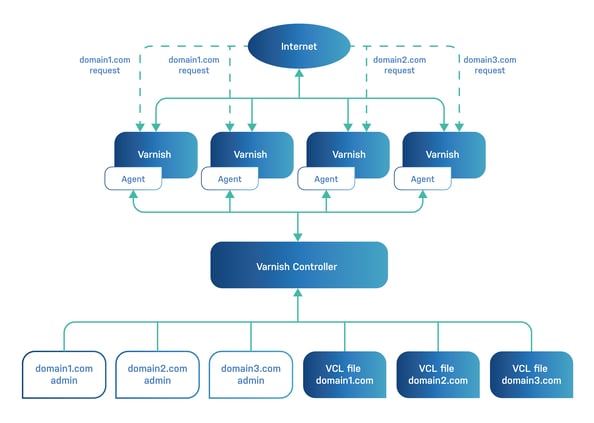For network operators and ISPs, revenue margins are narrowing in hyper-competitive markets. At the same time, capital outlay is growing for these same companies when they rely on commercial CDNs for their own content delivery.
Both the revenue growth and capital expenditure reduction challenges can be tackled with an easy twofold approach:
- Build your own CDN to take advantage of your own network capacity
- Lease your new CDN services to other businesses that need more tailored, specific or local CDN services
What is a multitenant CDN?
A multitenant CDN is a single instance of an application and its infrastructure, which serves multiple customers while keeping the different customers and their setups isolated and separate. For operators and ISPs, this is a kind of extension to the services they offer already. The extra multitenancy CDN layer means that the operator becomes a ‘landlord’ to a bigger property. The landlord is responsible for maintenance and operations, but each tenant rents their own separate part of the building (in this case, CDN).
What benefits does multitenancy CDN offer?
Building a private CDN service means it’s not a shared service; it’s a dedicated CDN for you, offering tight control, which is not a black box and allows for tweaking all the components. Private CDN services are also ideal for companies who have looked at commercial CDN offerings, but because of a lack of capacity and/or coverage, need to look for something for their location or demand. Similarly, if you are an operator or ISP with infrastructure and network capacity, your own CDN software makes a lot of sense.
Operators and ISPs gain the opportunity to capitalize on resources they already have while their tenants/users get more flexibility from their CDN services.
Benefits for operators/ISPs
- Reduce costs by building and using own CDN rather than outsourcing to commercial services
- Maximize revenue from existing network resources by leasing CDN services
- Tap into new customer bases and use cases
- Gain efficiencies through more effective and targeted use of resources
Benefits for CDN tenants
- Gain performance enhancements, flexibility and targeting capabilities in content delivery strategy
- Get resources required on demand
- Get more customized features for specific types of workload
- Get CDN service more suited to specific needs, e.g., edges closer to target audiences, local geographic location, greater performance, customization options, etc.
How do multitenancy CDN deployments work?
Multitenancy CDNs come down to resource allocation and point of presence and content placement and location, i.e. PoP placement and logic that dictates which PoP from which to serve content.
A multitenancy architecture can look very different depending on the configuration and use cases involved. One common example is operators and ISPs building private CDNs to manage their own content delivery and finding that they can lease extra capacity and CDN infrastructure onward to other content providers.
While there are multiple ways to create a multitenancy setup, our take is via Varnish Enterprise, Varnish Controller and the Varnish Configuration Language (VCL), which can have you running a private CDN and multitenancy setup in less than an hour. Here’s an outline of what that can look like.

If you’d like to learn more about how to build a private CDN and create a multitenancy CDN solution with Varnish, watch the webinar, From clusters to CDNs: Multitenancy deployments made easy with Varnish Controller. Or download our new e-book, Building a multitenant CDN solution.
To find out more detail, download the Multitenancy e-book 👇
/VS-logo-2020-197x60.png?width=136&height=60&name=VS-logo-2020-197x60.png)





